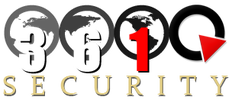Country Profile: Lebanon
|
Executive Summary
It was not until the summer of 2005 that Lebanon held elections that were free from interference from foreign enterprises. This is indicative of a larger picture that paints the state as deeply embedded in the complicated web of affairs amongst the Middle East. The current government under billionaire Prime Minister Najib Miqati faces immense challenges with not only quelling turmoil created by the numerous terror organizations operating within the state, but also with skyrocketing tensions with hostile neighbors in the region. Brief History Lebanon was formerly within the Ottoman Empire province of Syria. After the First World War, France acquired a mandate over the northern portion of this region, and geopolitically separated out Lebanon in 1920. After just over two decades, Lebanon was granted full independence in 1943. Although the state was ravaged by a substantial civil war from 1975-1990, Lebanon has made drastic strides to recover from this devastation, especially focusing on rebuilding its political institutions. The Lebanese blueprint for reconciliation, the Ta'if Accord, established a more equitable political system, particularly by giving Muslims a greater voice in the political process while institutionalizing sectarian divisions in the government. Since the end of the war, Lebanon has conducted several successful elections. However, the past decade has been marred by foreign intervention in the state’s affairs, particularly by neighboring Syria. Political Structure
Economic Structure
Social Structure
Religion:
Churches:
Ethnicity:
|
Gender:
Urbanization:
|
Operating Organizations
Political Groups:
Terrorist:
Political Groups:
- Maronite Church
- Other: note - most sects retain militias and a number of militant groups operate in Palestinian refugee camps
Terrorist:
- While there are many terror groups operating in the state, the particularly large security threats stem from Hezbollah, Fatah al-Islam, al-Jihad, Asbat al-ansar, Palestinian Islamic Jihad, and the Abu Nidal Organization.
Allies and Enemies
- Regional Allies: Iran
- Regional Enemies: Syria, Qatar, Saudi Arabia, Turkey, Israel
- Global Allies: United States, France
- Global Enemies: N/A
Country Trajectory
Lebanon will have to continue to engage in high level intelligence dialogues with Western governments and reevaluate the organization and priorities of its own government if it is to successfully combat its emerging conflict with Syria. Loyalists to Syrian president President Bashar al-Assad will not cease until the state ends its policy of offering a safe haven to Syrian refugees. The Syrian airstrike (occurring March 18th, 2013) on Lebanese soil is a serious development that caused warranted alarm among Lebanese government officials. While there were no reports of injuries, this attack is a significant escalation of violence in comparison to the past several years, and nothing short of a reason to orchestrate a swift and and tactful response.
Lebanon will have to continue to engage in high level intelligence dialogues with Western governments and reevaluate the organization and priorities of its own government if it is to successfully combat its emerging conflict with Syria. Loyalists to Syrian president President Bashar al-Assad will not cease until the state ends its policy of offering a safe haven to Syrian refugees. The Syrian airstrike (occurring March 18th, 2013) on Lebanese soil is a serious development that caused warranted alarm among Lebanese government officials. While there were no reports of injuries, this attack is a significant escalation of violence in comparison to the past several years, and nothing short of a reason to orchestrate a swift and and tactful response.
Current Events
http://www.presstv.ir/detail/2013/03/18/294289/israeli-jets-fire-flare-bombs-over-lebanon/
http://www.aljazeera.com/news/middleeast/2013/03/201331914252279655.html
- Mar. 18th, 2013: The Lebanese Army said four Israeli warplanes penetrated the country’s airspace and flew over several areas of the country in blatant violation of a UN Security Council resolution. Lebanon's government, the Hezbollah resistance movement, and the UN Interim Force in Lebanon, known as UNIFIL, have repeatedly condemned the overflights, saying they are in clear violation of UN Resolution 1701 and the country's sovereignty.
http://www.presstv.ir/detail/2013/03/18/294289/israeli-jets-fire-flare-bombs-over-lebanon/
- Mar. 19th, 2013: Syrian air force jets fired four rockets at a remote section of the border with Lebanon on Monday, security sources said, four days after Damascus warned it may strike at Syrian rebels taking refuge across the frontier. An estimated 15,000 Syrians are taking refuge in Lebanese border town of Arsal and many locals oppose the Assad regime.
http://www.aljazeera.com/news/middleeast/2013/03/201331914252279655.html
Sources
- http://www.cfr.org/lebanon/terrorism-havens-lebanon/p9516
- https://www.cia.gov/library/publications/the-world-factbook/geos/le.html
- http://web.archive.org/web/20071013200938/http://www.religiousintelligence.co.uk/country/?CountryID=48
- http://www.nytimes.com/2012/08/16/world/middleeast/explosion-in-damascus-syria.html?pagewanted=all&_r=0
- http://www.presstv.ir/detail/2013/03/18/294289/israeli-jets-fire-flare-bombs-over-lebanon/
- http://www.aljazeera.com/news/middleeast/2013/03/201331914252279655.html
